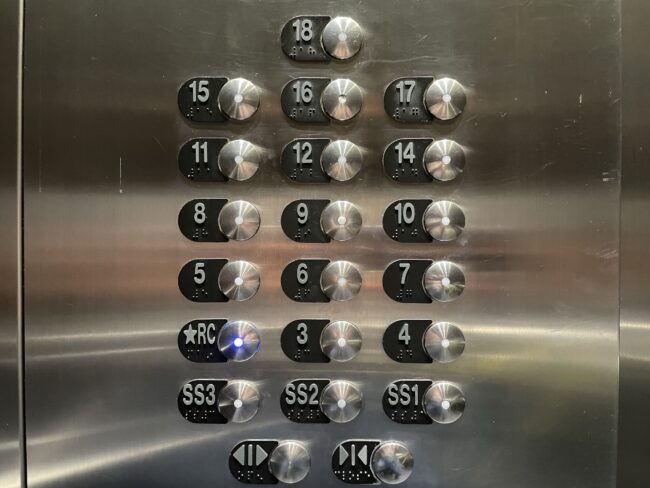How do you say first, second, and third in French? Luckily for English speakers, ordinal numbers in French are actually quite easy! Almost every number just follows the same format: we just add -ième, with only a few exceptions that we’ll explain below.
Let’s dive straight in with our list of ordinal numbers in French, along with an explanation of their abbreviations. We’ll explain the rules and exceptions in the subsequent sections.
If you’re not comfortable with the cardinal numbers yet, we suggest you begin with our post on counting in French. Now let’s see the ordinal numbers in French!
This article is brought to you by LingoCulture, Where you can get unlimited private French classes via Zoom with native teachers for a flat monthly rate. It’s the closest thing to immersion you can get without living in a French-speaking country. Click here to learn more.
Ordinal numbers in French
Here we present a simple French ordinal numbers table. With what we present here, you should be able to create any ordinal number in French.
We use the French abbreviations for ordinal numbers in the first column: we just place the letter e in superscript after the numeral, so second is 2e, tenth is 10e, and so on.
| 1e | premier / première |
| 2e | deuxième |
| 3e | troisième |
| 4e | quatrième |
| 5e | cinquième |
| 6e | sixième |
| 7e | septième |
| 8e | huitième |
| 9e | neuvième |
| 10e | dixième |
| 11e | onzième |
| 12e | douzième |
| 13e | treizième |
| 14e | quatorzième |
| 15e | quinzième |
| 16e | seizième |
| 17e | dix-septième |
| 18e | dix-huitième |
| 19e | dix-neuvième |
| 20e | vingtième |
| 21e | vingt et unième |
| 22e | vingt-deuxième |
| 23e | vingt-troisième |
| 30e | trentième |
| 31e | trente et unième |
| 32e | trente-deuxième |
| 40e | quarantième |
| 50e | cinquantième |
| 60e | soixantième |
| 70e | soixante-dixième |
| 80e | quatre-vingtième |
| 90e | quatre-vingt-dixième |
| 99e | quatre-vingt-dix-neuvième |
| 100e | centième |
| 101e | cent unième |
| 102e | cent deuxième |
| 200e | deux centième |
| 201e | deux cent unième |
| 1.000e | millième |
| 1.001e | mille unième |
| 10.000e | dix millième |
| 100.000e | cent millième |
| 1.000.000e | millionième |
| 1.000.000.000e | milliardième |
Rules for ordinal numbers in French
As you’ve surely noticed, the basic rule of ordinal numbers in French is just that we add ‑ième to the end of the cardinal number. Let’s just point out some of the other important rules here.
Exceptions to just adding -ième
If the cardinal number ends in ‑e, we first drop the ‑e before adding ‑ième.
- quatre: quatrième, onze: onzième, trente: trentième
First is an irregular exception, since un becomes premier or première. Any subsequent cardinal number that ends in un is regular, such as vingt et unième or cent unième.
Fifth in French is an exception, since we first need to add a ‑u‑ at the end of cinq to get cinquième.
Ninth in French is an exception, since we change the final ‑f in neuf to ‑v‑ in order to ease the pronunciation of neuvième.
First in French: Premier or Première
Only one ordinal number has both masculine and feminine forms: le premier and la première. These forms are sometimes abbreviated as 1er and 1ière, though it’s common enough to just write 1e for either form.
- Elle était ma première copine, et j’étais son premier copain. – She was my first girlfriend, and I was her first boyfriend.
These same forms apply to last in French, which is dernier and dernière.
Le, la, or les?
Ordinal numbers can be used as either adjectives or pronouns. Either way, they can take articles or other determiners to reflect the gender and number of whatever they’re referring to.
The French ordinal numbers themselves are invariable between masculine and feminine (except for premier/première), but they can still be plural.
- C’est la deuxième tentative et le deuxième échec. – It’s the second attempt and the second failure.
- Vous voyez ces perruches ? Ce sont les troisièmes à envahir le palmier depuis mon arrivée. – You see those parakeets? They’re the third ones to invade the palm tree since I got here.
- Certains bâtiments n’ont pas de treizièmes étages. – Some buildings don’t have thirteenth floors.

Umpteenth in French: Énième
You know when you just lose count, or you just want to exaggerate a number, so you use umpteenth instead of anything precise? We have this same concept in French as énième!
- Votre fille vient de retourner dans la cuisine pour son énième cookie. – Your daughter just went back into the kitchen for her umpteenth cookie.
Conclusion: Ordinal numbers in French
Short and sweet, right? Today’s post was pretty straightforward, mostly summed up in a big list of ordinal numbers in French. We still got to dive into a bit of grammar, explaining the various rules and exceptions to the basic form of adding ‑ième to the cardinal number.
So now do you know how to say first, second, and third in French? If you’ve read this far, you’ve certainly learned all the ordinal numbers in French!